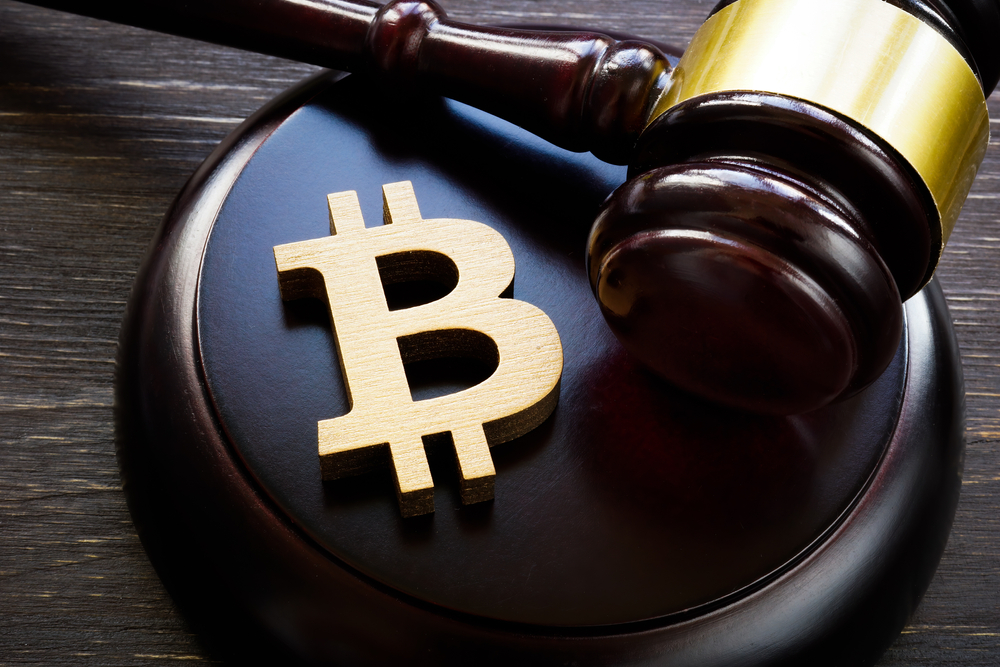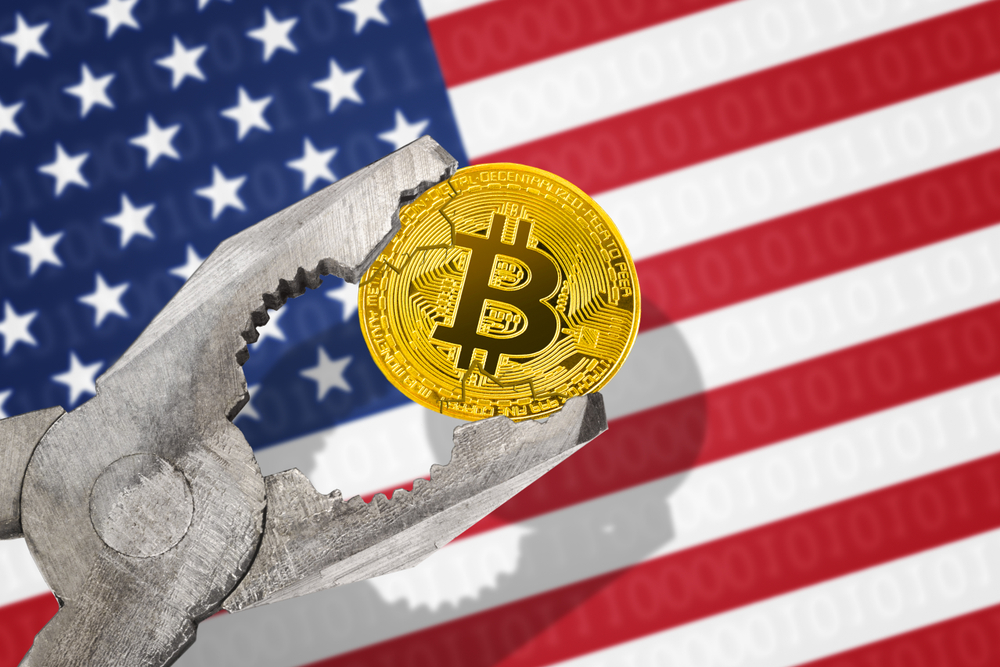Understanding Cryptocurrency Regulation

Ever felt like you’re navigating an endless maze when trying to grasp cryptocurrency regulation? You’re certainly not alone. As perplexing as blockchain algorithms, deciphering the rules governing digital currencies offers its share of challenges. But here’s the thing: understanding these regulations isn’t just smart, it’s essential for the safety of your digital wealth. Picture navigating the crypto sphere with confidence, your virtual assets secure, and innovation flourishing, all thanks to comprehensible and enabling regulations. Stay tuned as we light the way through the shadows of an unregulated market, offering you the knowledge and peace of mind needed to trade, invest, and innovate effectively. Let’s unravel this intricate web together.
The Maze of Cryptocurrency Regulation

Let’s face it, the cryptocurrency world is moving at breakneck speed, and keeping up with the legal side of things can seem like an impossible task. Regulations in this space are evolving just as rapidly as the technology itself. Here’s what you need to know:
Unraveling the Intricate Web
- Legislation is racing to catch up with innovation, leading to a dynamic landscape of do’s and don’ts.
- New policies can pop up overnight, creating opportunities and obstacles for traders and investors.
- Without clear rules, the risk of fraud and instability in the crypto market skyrockets, making understanding regulations not just smart, but necessary.
While the concept of regulation might induce yawns, stick with me. Knowledge is power—and in the cryptosphere, it’s your best defense against volatility and uncertainty.
Picture this: a world where your virtual assets are secure, investment risks are minimized, and innovation thrives—all thanks to well-crafted regulations. Such a world isn’t just a pipe dream. By understanding the rules that govern digital currencies, you can navigate the crypto labyrinth with confidence. And here’s the kicker: properly designed regulations don’t stifle growth; they enable it by fostering trust.
Curious about how these regulations work in practice, and why they’re more than just bureaucratic red tape? Stay tuned—the next part of our journey explores the reasons behind every twist and turn in the maze of crypto law.
What dangers lie in the shadows of an unregulated crypto market, and how do regulations light the way? We’ll unveil the answers and continue to demystify the world of cryptocurrency, so you can trade, invest, and innovate with peace of mind. Hang tight, and prepare to dive deeper in the next installment.
The Importance of Cryptocurrency Regulation

When it comes to navigating through the dynamic world of digital currencies, understanding why cryptocurrency regulation is pivotal becomes our guiding light. Just as traffic signals maintain orderly conduct on roads, cryptocurrency regulations establish the dos and don’ts in this volatile market.
Cyberspace’s Wild West
“An ounce of prevention is worth a pound of cure,” as the old adage goes, and this rings especially true in the frontier world of cryptocurrencies. Imagine you’re out in the open ocean — it’s uncharted, unpredictable, and you’re without a compass. This is what the cryptosphere can feel like without robust rules in place. So, why should you care about these guidelines and safeguards?
- They act as your compass, helping you navigate through stormy markets.
- They prevent the digital equivalent of pirates — scammers and hackers — from running rampant.
- These rules demarcate safe zones, highlighting transparent operations and warning against the murky waters of fraud and misconduct.
As we peel back the layers of the crypto ecosystem, we unveil stories of audacious hacks, Ponzi schemes, and cases of financial heartbreak that could have been mitigated, if not prevented, by stringent regulations. Are you starting to see the map that these regulations draw?
Safeguarding Investors’ Interests
Safety nets are not just for trapeze artists; investors need them too. Maintaining the credibility of blockchain technology and the digital assets driven by it is no small feat. A recent study by the Cambridge Centre for Alternative Finance stated that regulatory clarity could “help catalyze investor participation and stimulate both retail and institutional demand.” Here’s why regulation is that safety net:
- It ensures that crypto businesses act responsibly, maintaining fair play in the digital market.
- A clear regulatory framework can attract more stable investments, assuring participants that the sand won’t shift beneath their feet without warning.
- It can aid in sustaining the overall health of an economy by deterring fraudulent and speculative practices.
Let me put this into perspective for you: without set rules, would you feel confident investing your hard-earned money?
Ensuring Financial Integrity
In the chess game of global finance, cryptocurrencies are like the queen — full of potential yet chaotic if not played right. Regulations are the checks that keep this queen’s power beneficial rather than destructive. Through proper policymaker provisions, the inherent disruptive nature of cryptocurrencies can be harnessed for innovation, while maintaining the integrity of the overall financial system.
Take for instance the Anti-Money Laundering (AML) directives integrated into many countries’ regulatory frameworks. They’re not just there for show; they’re essential in curtailing financial crimes and ensuring the ethical flow of money. Have you considered how these measures not only protect but empower your financial footprint?
With these points laid out, it’s clear that regulation isn’t a buzzkill. It’s a necessity, like a lighthouse guiding ships safely to the harbor. As we’ve uncovered the reasons why cryptocurrency regulation is indispensable, you might be wondering, “But how does it all work? What magical processes go on behind the scenes to turn chaotic code into a safe digital goldmine?” Stay tuned, as we explore the very essence of cryptocurrencies in the upcoming section, making the complex world of digital currency as simple as turning on a lighthouse beacon.
Making Sense of Cryptocurrency

Welcome to the world of cryptocurrencies – a digital landscape that offers a novel approach to traditional finance. If you’ve been baffled by the buzzwords and technical jargon, you’re not alone. Let’s embark on a journey to demystify this modern marvel and bring it within your grasp. It’s time to turn the complex into the comprehensible.
Your Magic Carpet to the Digital Economy
Imagine a world where money moves like a gust of wind, across borders, without the need for clunky old institutions slowing down the breeze. That’s the essence of cryptocurrencies. They are decentralized digital currencies that let you be the master of your financial destiny. Here’s a slice of the magic:
- Peer-to-Peer Technology: Peer what? Picture this: You’re in a bustling marketplace, trading directly with others, with no need for a middleman. That’s the beauty of peer-to-peer technology enabling direct transactions.
- Anonymity & Security: Ever wished to keep your financial business away from prying eyes? Cryptocurrencies offer a level of anonymity that traditional banking can’t match, all the while keeping your transactions secure.
- Low Fees & High Speed: Say goodbye to hefty transaction fees and snail-paced transfers. Transacting in crypto is like sending an email – fast, efficient, and cost-effective.
Decoding the Blockchain
At the heart of every cryptocurrency is the blockchain, a groundbreaking technology that’s taking the world by storm. Imagine a ledger, impervious to corruption, transparent as a mountain stream, and as strong as the bonds of trust should be. This is what the blockchain brings to the table:
- Immutable Records: Once a transaction is recorded, consider it etched in digital stone, unalterable—a guardian of truth in the cyber world.
- Global Trust: Trust can be scarce, but blockchains create a unique network where trust is built into the system. It’s global cooperation without ever needing to shake hands.
- Innovation Hub: It’s not just a financial tool; it’s a potential incubator for innovations that we’ve yet to dream up. The blockchain is a platform that’s only just started to reveal its capabilities.
“In the world of blockchain, trust is not an issue; it’s a mathematical certainty.” This statement encapsulates the revolutionary might of blockchain technology, propelling it as the backbone of the digital financial realm.
In essence, the marriage of cryptocurrencies and blockchain is a fusion of finance and technology, unlike anything we’ve known. And as you’re beginning to see, making sense of the crypto world isn’t akin to learning rocket science—it’s about understanding the building blocks that give it power. It’s exciting, isn’t it?
Still wondering how these digital marvels find their way into real-world usage? Stay with me. The journey through cryptocurrency regulation in the US is just on the horizon. How does a financial frontier maintain order and what rules come into play in the land of the free?
Cryptocurrency Regulation in the US

Emerging from the cryptic depths of cryptocurrency concepts, we’re stepping into the spotlight to focus squarely on how the US is taking charge of this digital frontier. Regulations can be as cryptic as the cryptocurrencies they aim to govern, but understanding them is pivotal for safe navigation through this financial evolution.
Federal Rule Makers
Let’s cut to the chase and talk about the big guns, the federal bodies, that are spinning the regulatory web in the United States. Picture this as the Avengers of cryptocurrency oversight:
- The Securities and Exchange Commission (SEC) often takes center stage, keen on determining if your favorite crypto fits the bill of a security.
- The Commodity Futures Trading Commission (CFTC) jumps in when crypto is seen as a commodity, with Bitcoin and Ethereum typically in this spotlight.
- Not to forget the Federal Trade Commission (FTC), keeping a hawk’s eye on deceptive practices in the cryptosphere.
- And yes, the Internal Revenue Service (IRS) is always there, because in the world of virtual coins or tangible dollars, taxes are still a certainty.
These organizations are the architects of the labyrinth; to navigate through it, you need to understand the paths they’re carving out for cryptocurrency.
US-Specific Crypto Laws and Guidelines
When you’re wrapped up in the enigma that is US cryptocurrency regulation, it often feels like reading an ancient hieroglyphic script. Let’s simplify it:
Dive into the IRS guidelines and you’ll find that crypto is treated as property for tax purposes, meaning every transaction can trigger a tax event. The SEC, on the other hand, is famous for its court battles deeming ICOs as security offerings, notably the ongoing saga with Ripple.
What’s truly fascinating is watching how laws evolve with technological happenings. For instance, after several high-profile hacks, regulators are pushing harder for security measures that serve as digital armored cars for your assets.
Real-life examples are potent teachers; take the BitLicense framework from New York State, setting a precedent for how stringent regulations can get, or Wyoming’s digital asset-friendly laws that beckon blockchain businesses with open arms.
Studies show an ever-present balancing act; too little regulation invites chaos, while too much stifles innovation. It’s a Goldilocks conundrum, finding that ‘just right’ zone where digital currencies can flourish without the looming specter of misuse or financial loss.
“The stability of the global economy hinges on the fine-tuned mechanism of regulation, especially in the realm of cryptocurrency. It’s about fostering innovation while anchoring it firmly to the bedrock of financial security.” – An unspoken but omnipresent industry creed.
As the plot thickens in the drama of US regulation, one can’t help but wonder about the global stage. What international twists and turns do global laws present to the cryptocurrency enthusiast?
Stay tuned as we turn our gaze outward, transcending borders to explore the myriad of approaches taken by different countries. What lessons could we draw from their regulatory frameworks, and how might they influence the US’s own regulatory moves? These questions and more will be the compass guiding our next steps in this cryptic odyssey. Ready to broaden your perspective?
Cryptocurrency Regulations Around the Globe

Greetings, curious minds! Ready for a high-flying adventure across the continents to explore how different nations are tackling the enigma that is cryptocurrency regulation? Fasten your seatbelts, because our journey promises interesting finds and unexpected twists.
A Global Perspective
Imagine you are standing atop a tower, gazing at the vast expanse of the global cryptocurrency landscape. From this vantage point, the varied approaches to crypto regulation become evident, and we can see how these shaped today’s market. For instance, some countries have opened their arms to digital currencies, creating havens for blockchain innovation. At the same time, others have constructed imposing barriers, aligning with more conservative monetary policies.
Take, for instance, the bustling markets of Japan, where crypto is recognized as legal tender and is subject to a clear regulatory framework. This approach has fostered a friendly environment for both startups and investors. In contrast, China represents a sharp turn in the narrative, where despite being a hub of mining activity, stringent regulations have cast a shade on the usage and trading of cryptocurrencies.
Now, if we shift our gaze towards the European scenery, we witness a diverse regulatory mosaic. Germany stands out, with its Federal Financial Supervisory Authority (BaFin) bestowing cryptocurrencies with the status of “units of account,” welcoming them into the nation’s financial tapestry.
But why does this matter to us? Just peep through the lens of global markets, and you’ll see investors from another country dabble in a digital asset governed by a foreign jurisdiction. It’s a tangled web of international finance that requires an intricate balance to maintain financial integrity while innovating freely.
For deeper insight, turn to authoritative resources such as Encyclopedia Britannica and Investopedia, which shine a light on the complexities and idiosyncrasies of global crypto regulations. Even the IMF has thrown its hat into the ring, illustrating how the tide of regulation affects the financial landscape.
But what do these diverse regulatory frameworks mean for the average Jane and Joe looking to jump into the crypto fray? They show the importance of being well-versed with not just the technology but also the legal nuances before diving into crypto investments. After all, knowing the regulations in your jurisdiction can be the difference between capitalizing on a golden opportunity and falling into a regulatory pitfall.
Your curiosity might now be piqued: how do these contrasting regulations impact the global market? And more importantly, how will they evolve as the digital asset space continues rapidly innovating and expanding? Perhaps the answers lie just on the horizon, within the scope of exciting developments and forward-thinking reforms.
Remember, regulations are the invisible threads weaving the safety net beneath your high-stake crypto investments. With this global tour of regulations, your toolkit for navigating the crypto world just got a vital upgrade. Stay tuned, because up next, we’ll be venturing into even more exhilarating crypto territories that are bound to keep you captivated.

Well, I trust by this stage of our journey, you’re feeling much like an intrepid explorer, set to conquer the intricate terrain of cryptocurrency regulations. Let’s cap off this adventure by tackling some final yet critical topics. Picture this as the point where we make sure every knot is tied and every map is scrutinized before we wave off our metaphorical ship and plunge into the open crypto seas.
Landmines and Gold Mines
Engaging with cryptocurrencies is akin to navigating a field scattered with potential pitfalls and treasure troves. Understanding the risks involved is paramount; from the volatility that can whipsaw your investments overnight to the shadowy risks of cyber theft. Yet, for those who navigate wisely, the digital gold mines await, bringing possibilities of high returns, decentralized finance, and the joy of being part of groundbreaking blockchain technology that could shape our future economy.
Real-world examples are abundant; take Bitcoin’s staggering peak of nearly $65,000 and its subsequent nose dives—we see a clear depiction of the price volatility at play. However, the growing adoption by institutional investors and retail players suggests that cryptocurrency continues to be a lucrative field for many.
Future of Crypto Regulation
Peering into the crystal ball of cryptocurrency’s future is no mean feat—regulations in this sphere are as fluid as the technology itself. Predicting the direction of regulatory winds could be as conjectural as cryptocurrency prices. Yet, one thing is certain: regulatory frameworks will mature, potentially legitimizing and stabilizing the market further.
Studies have shown that clearer regulations can lead to higher adoption rates and trust among the general public. Take the EU’s proposed Markets in Crypto-Assets (MiCA) framework – aimed at harmonizing regulations across member states, it suggests a future where cross-border crypto transactions could be as smooth as traditional banking.
Wrapping Up the Cryptoverse Journey
It’s with a sense of accomplishment and excitement that we round off this comprehensive exploration of the crypto world. If there’s a lingering cloud of uncertainty still shadowing your thoughts, let it not dismay you. The very essence of the crypto-verse is its relentless evolution, and your understanding will grow as you immerse yourself in its developments.
Remember, as we tread through this dynamic digital ecosystem, it’s the knowledge of its frameworks and the savvy interpretation of its trends that will serve as your compass. So keep an open yet cautious mind as you step forth. Embrace the ongoing change, stay informed, and most importantly, enjoy the exhilarating hunt for crypto knowledge and riches! Happy crypto hunting, and till next time, may your digital wallets grow and your transactions be secure!
